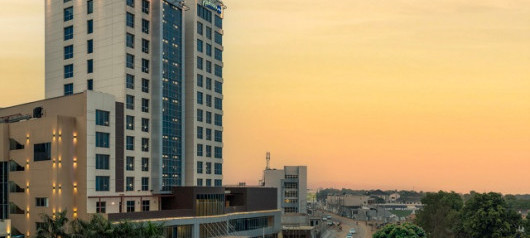JUBA A RISING CAPITAL FOR TOURISM IN SOUTH SUDAN
Juba, the capital of South Sudan, is an emerging destination with immense potential for tourism in South Sudan. While the city may not yet rival the more established tourist hubs of East Africa like Nairobi, Kampala and Dar-es-salam, it offers a unique blend of history, culture, and untapped natural beauty.
As South Sudan continues to stabilize and rebuild after years of conflict, Juba is positioning itself as a gateway to explore the richness of this young nation. This article explores the factors contributing to Juba's rise as a tourism destination and what travelers can expect when visiting this dynamic city.
Historical Significance
Juba holds a special place in the history of South Sudan. Founded in the 1920s by Greek traders, the city played a crucial role during the colonial era and later became the center of the struggle for independence from Sudan. Juba officially became the capital of South Sudan in 2011, when the country gained independence. This historical significance adds a layer of depth to any visit, offering insights into the complex history and resilience of the South Sudanese people.
One of the key historical sites in Juba is the John Garang Mausoleum, a monument dedicated to the late Dr. John Garang, the leader of the Sudan People's Liberation Movement (SPLM) and a pivotal figure in the country's fight for independence. The mausoleum is not just a place of remembrance but also a symbol of hope and national pride for South Sudanese citizens. Visitors to the mausoleum can learn about Garang's legacy and the long struggle that led to South Sudan's independence.
Another historical site of interest is St. Joseph's Catholic Church, one of the oldest churches in Juba. Built during the colonial period, the church stands as a testament to the enduring faith of the local community despite decades of conflict. Attending a service here provides a glimpse into the spiritual life of the South Sudanese people, who have maintained their traditions and beliefs through difficult times.
Cultural Diversity
Juba is a melting pot of cultures, reflecting the diversity of South Sudan itself. The country is home to more than 60 different ethnic groups, and this rich cultural tapestry is evident in the capital city. The Juba Cultural Festival, held annually, showcases traditional music, dance, and art from various communities across the country. For tourists, the festival offers a rare opportunity to experience the vibrancy of South Sudanese culture in one place.
The Juba Market is another must-visit spot for those interested in the local culture. The market is a bustling hub where you can find everything from traditional crafts and clothing to fresh produce and spices. It’s a great place to pick up souvenirs and interact with locals. Bargaining is common, and friendly banter with vendors adds to the experience. The market also provides a glimpse into the daily life of Juba's residents, offering a contrast to the more formal tourist attractions.
Nimule National Park, although located just outside Juba, offers a cultural experience through its connection to the local communities living around the park. Visitors can engage in community-based tourism activities, such as guided village tours where they can learn about traditional practices, handicrafts, and the importance of wildlife conservation from the perspective of the local people. This interaction helps promote sustainable tourism by ensuring that local communities benefit directly from tourism activities.
Natural Beauty
Juba's natural surroundings are another draw for tourists. The city is located on the banks of the White Nile, one of the world's longest rivers, and offers stunning views and opportunities for water-based activities. Nile River cruises are becoming increasingly popular, allowing visitors to take in the scenic beauty of the river and spot wildlife such as hippos and various bird species. The river also provides a serene setting for picnics, fishing, and sunset boat rides.
For nature enthusiasts, a visit to Jebel Kujur is a must. This mountain, located on the outskirts of Juba, offers hiking opportunities and panoramic views of the city and the surrounding landscape. The hike up Jebel Kujur is relatively easy and accessible to most travelers, making it a popular activity for those looking to escape the hustle and bustle of the city. The mountain is also a significant cultural site for the local Bari people, adding an element of cultural exploration to the trek.
Boma National Park, although farther from Juba, is one of the largest national parks in Africa and home to the second-largest animal migration on the continent. The park is a haven for wildlife, including elephants, giraffes, and antelope, and offers a pristine wilderness experience. While Boma may not be a day trip from Juba, it is a destination that can be explored as part of a broader tour of South Sudan, with Juba serving as the starting point.
Urban Development and Infrastructure
Juba is rapidly evolving, with significant investments in urban development and infrastructure. The city's skyline is gradually transforming with the construction of new hotels, restaurants, and shopping centers. The Juba Grand Hotel and Panorama Sarovar Portico Hotel are two examples of luxury accommodations that cater to international visitors. These hotels offer modern amenities, including swimming pools, fitness centers, and conference facilities, making them suitable for both tourists and business travelers.
In terms of dining, Juba is home to a growing number of restaurants that cater to diverse tastes. From traditional South Sudanese dishes to international cuisine, the city's culinary scene is expanding. Da Vinci Restaurant and Notos Lounge are popular spots for fine dining, while smaller local eateries offer authentic South Sudanese meals like kisra (a type of bread) and ful medames (a bean dish). For those who enjoy street food, vendors in the markets and along the streets of Juba serve up delicious snacks like roasted maize and samosas.
The Juba International Airport has also undergone improvements, making it easier for tourists to access the city. While the airport is still relatively small compared to those in other capital cities, ongoing upgrades are aimed at enhancing the passenger experience and accommodating the growing number of visitors to South Sudan.
Challenges and Opportunities
Despite the positive developments, tourism in Juba faces several challenges. The country's recent history of conflict has left many potential visitors cautious, and the tourism infrastructure is still in its early stages. Security concerns remain a significant issue, although the situation in Juba has improved considerably in recent years. Travelers are advised to stay informed about the current situation and to follow safety guidelines when visiting.
However, these challenges also present opportunities for growth. Juba's tourism industry is still relatively untapped, meaning that visitors can enjoy a more authentic and less commercialized experience. For adventurous travelers looking to explore new destinations off the beaten path, Juba offers a rare chance to witness a city and country in the process of transformation.
Moreover, the South Sudanese government has recognized the potential of tourism as a driver of economic growth and is working to promote the sector. Initiatives such as the **National Tourism Policy** aim to improve infrastructure, support local businesses, and market South Sudan as a unique travel destination. With continued investment and development, Juba has the potential to become a key player in East African tourism.
Juba, the rising capital city of South Sudan, offers a blend of historical significance, cultural diversity, and natural beauty that is waiting to be explored. While challenges remain, the city’s potential as a tourism destination is undeniable. For those willing to venture beyond the usual tourist spots, Juba provides a unique and enriching experience that showcases the resilience and vibrancy of South Sudan. As the city continues to develop, it is poised to become a significant destination on the East African tourism map, offering travelers a glimpse into a nation that is both ancient and new, traditional and modern, and always full of surprises.





